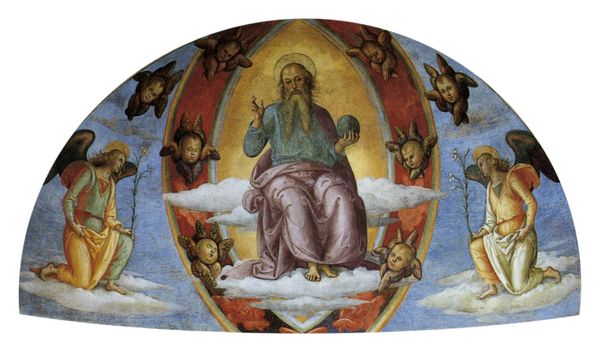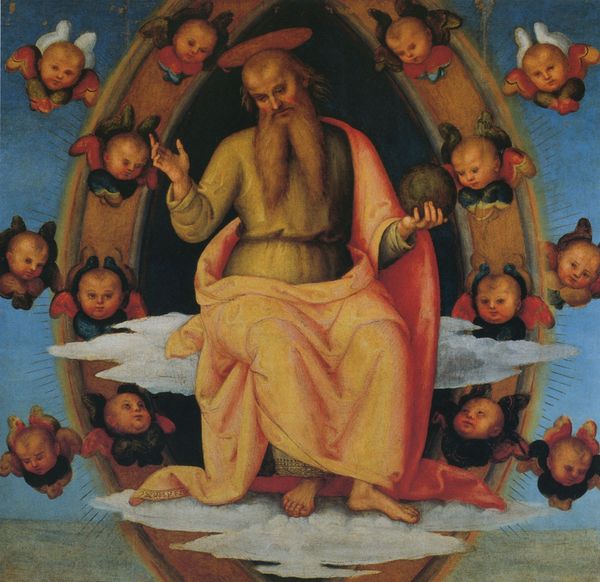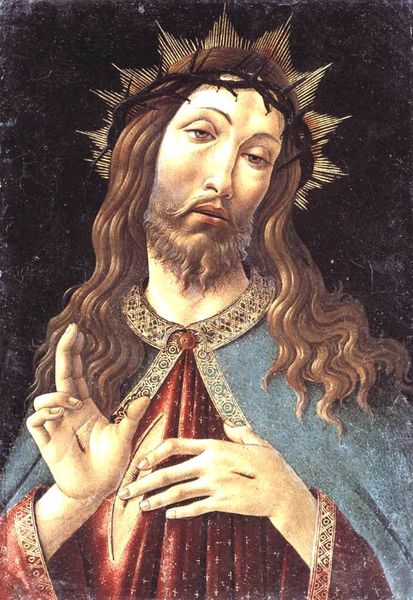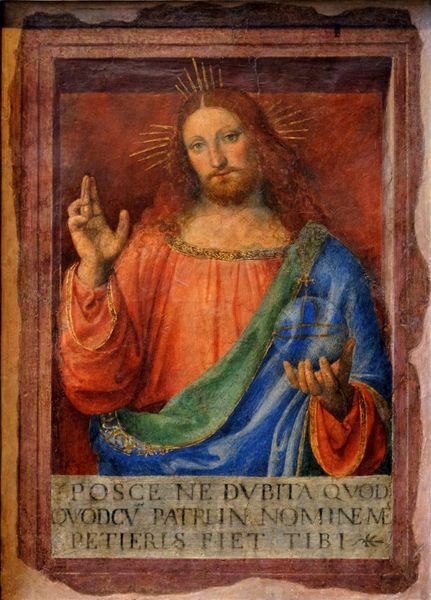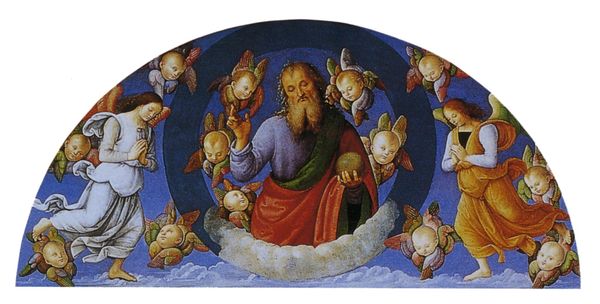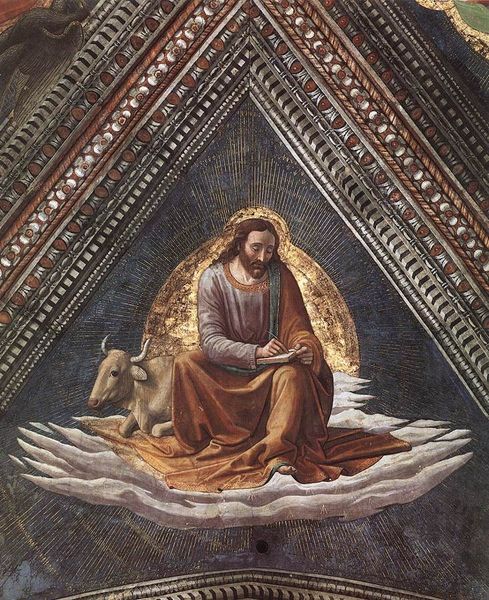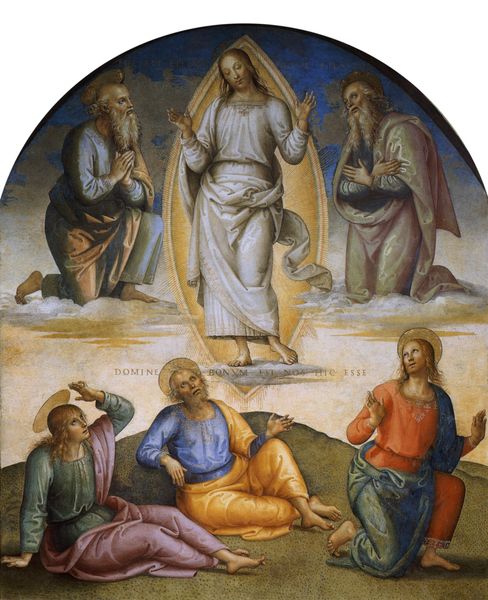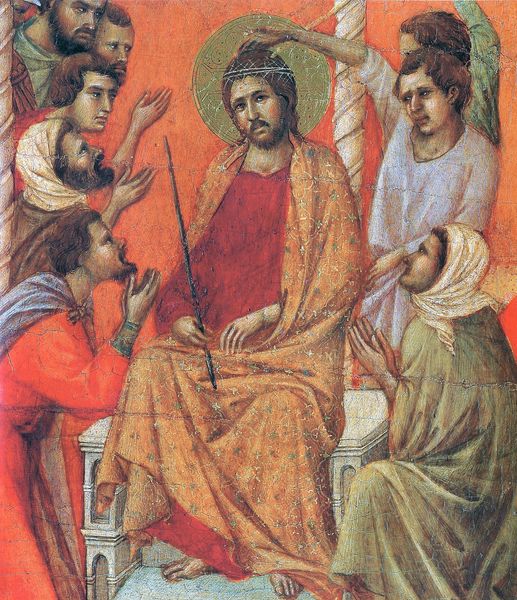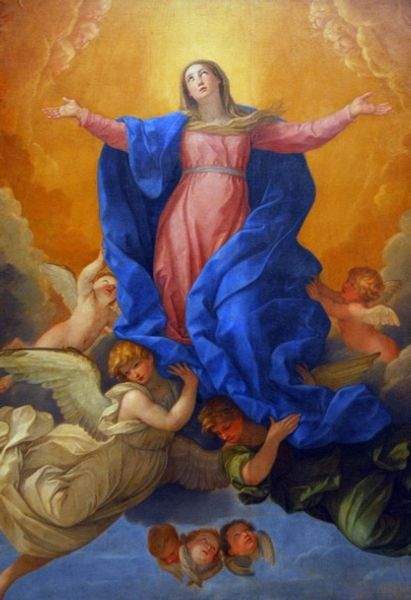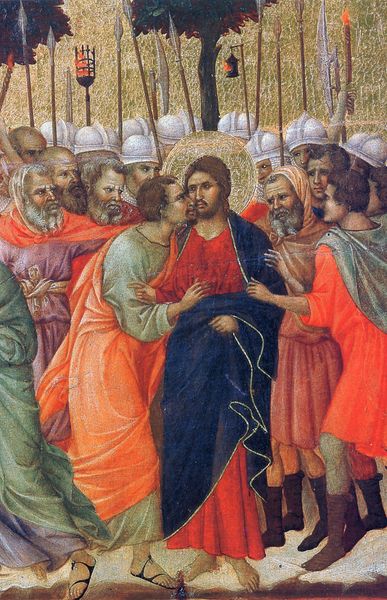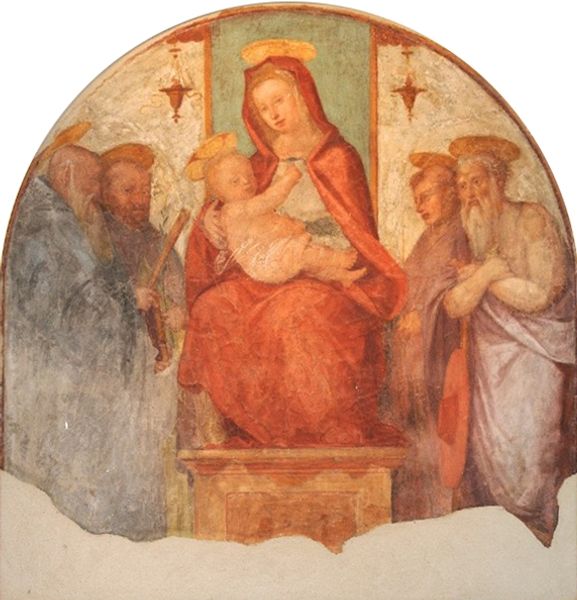
tempera, painting, oil-paint, textile
#
portrait
#
tempera
#
painting
#
oil-paint
#
textile
#
figuration
#
oil painting
#
studio composition
#
jesus-christ
#
christianity
#
history-painting
#
italian-renaissance
#
early-renaissance
#
virgin-mary
#
christ
Copyright: Public domain
Editor: Andrea Mantegna's painting "Christ with the soul of the Virgin," from 1506, features tempera and oil on textile. The condition makes it hard to grasp, but what strikes me is the stark contrast between Christ's robust form and the diminutive Virgin He's holding. What do you see in this piece? Curator: The diminutive Virgin held by Christ isn’t just a depiction; it's a symbol – the soul, extracted, newly freed. Consider the traditional imagery surrounding death and apotheosis; light typically represents divinity. But Mantegna seems to pull the visual language of halos into the clouds that carry them toward heaven. Why that particular condensation? Editor: Perhaps the cloudy halos indicate it’s an ethereal moment, the separation of the Virgin's soul, before it fully merges with the divine? Curator: Exactly. It is in transit. Also, note the gaze: Christ’s eyes look directly out to the viewer, as though holding the audience in place and saying “witness this transfer, which guarantees your own passage into Heaven". Does that break or confirm our contemporary understanding? Editor: It definitely challenges it, a call to be present with divinity, like an icon demands. But do you think the number of cherubic faces surrounding the pair has any deeper meaning or purpose, maybe acting as emotional anchors for the scene? Curator: Absolutely. The cherubs create a celestial chorus. They function both as witnesses *and* emotional resonators of the event. Renaissance artists deployed cherubs in particular formations, sometimes even hinting at divine geometry or numeric harmonies linked to heavenly order. They visually amplify the sacredness, embedding this scene within layers of established iconography. What have we come to accept, through this deeper look? Editor: It highlights that understanding symbolism gives older works fresh power. Instead of being remote historical curiosities, we are invited in, gaining familiarity and empathy.
Comments
No comments
Be the first to comment and join the conversation on the ultimate creative platform.
